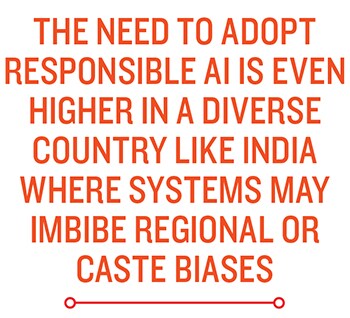
Responsible AI: Putting humans at the centre of artificial intelligence
Organisations need to adopt basic principles for responsible artificial intelligence to gain competitive advantage; they must also design systems that can effectively deal with biases

With huge advancements in data handling, computational power and an increased need to handle complexity, real-life use cases leveraging artificial intelligence (AI) have seen a sudden upsurge over the past few years. AI has certainly increased the financial performance of companies, customer experiences and quality of products.

At the same time, the need to ensure responsible use of AI has also increased. Organisations are recognising the need to develop and operate AI systems with fairness, without any racial, gender or other biases, and to take care of safety, privacy and society at large. These elements are giving rise to one of the most important debates in the world of AI today—how to ensure ‘responsible AI’ or RAI.
Private organisations, governments and international bodies are coming together to measure and analyse the technical and societal impact of AI systems, and are drafting principles and regulations to curb these biases. Most companies are yet to achieve RAI adoption. In this article, we investigate the tangible actions that companies should take while implementing RAI programs.
AI Biases








